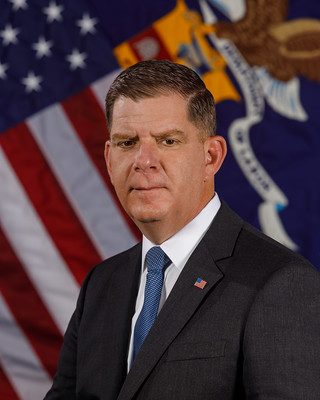
Fifteen months after the start of the pandemic, the Occupational Safety and Health Administration on Thursday issued an emergency temporary standard designed to protect healthcare workers — specifically including those in skilled nursing — against COVID-19.
“Too many of our frontline healthcare workers continue to be at high risk of contracting the coronavirus,” Labor Department Secretary Marty Walsh said in a statement.
The standard requires nonexempt facilities to conduct hazard assessments and draw up a written plan to mitigate spread of the virus, provide some employees with N95 respirators or personal protective equipment and ensure employees maintain a distance of six feet between other workers.
Additionally, employers are required to provide healthcare workers paid time off to get vaccinated and recover from any side effects. Employees who contract coronavirus or who are contagious must work remotely, be separated from other workers, if possible, or be given paid time off up to $1,400 a week. Businesses with fewer than 500 employees may be reimbursed through tax credits under the American Rescue Plan.
In line with existing Centers for Disease Control & Prevention guidance, fully vaccinated healthcare workers are exempt from masking, distancing and barrier requirements in well-defined areas and if there is no reasonable expectation that they will encounter another person infected with COVID-19.
The standard also requires employers with more than 10 workers to maintain a confidential COVID-19 log to record whenever an employee is COVID-19 positive, regardless of whether the individual was exposed at work. Cases must be reported within 24 hours of learning that an employee is sick.
“The tracking will help evaluate potential workplace exposure to other employees, and will assist the employer in following requirements for notifying employees who have been exposed to COVID-19 in the workplace and removing employees from the workplace when necessary,” OSHA said. “Entering information on the COVID-19 log about employees with nonwork-related COVID-19 illness also assists employers in tracking how and when the disease entered the workplace. The information entered on the log may assist an employer in determining whether the employer’s policies and procedures have been effective in the prevention of COVID-19 in their workplace.”
Healthcare providers must also continue to report work-related cases of COVID-19 on standard OSHA forms, and nursing homes must report staff testing information through the CDC’s National Healthcare Safety Network.
The emergency temporary standard is effective immediately after Federal Register publication. Employers must comply with most provisions within 14 days. OSHA said it will use enforcement discretion to avoid citing employers who miss compliance deadlines but make a good faith effort to comply.
For more coverage, including how some home health workers could be exempt, see McKnight’s Home Care. Also see coverage by McKnight’s Senior Living, including senior living industry reaction.





